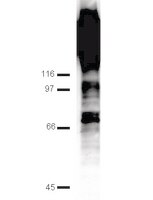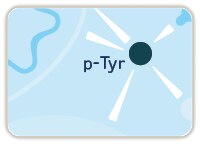Effect of the methodology on peptide amino acid concentrations in blood and plasma of sheep.
L Bernard,B Chauveau,D Rémond
Archiv für Tierernährung
54
2001
Afficher le résumé
Different methodologies for the measurement of peptide amino acid (PAA) in blood and plasma were compared in sheep. Preparation of blood and plasma samples consisted of a deproteinization, either chemical with sulfosalicylic acid (0.04 g for 1 ml of sample) or physical by ultrafiltration (10,000-MW cut-off filters), with or without a subsequent ultrafiltration through a 3,000-MW cut-off filter. Peptide concentrations were determined by quantification of amino acid concentrations before and after acid hydrolysis of samples. Free amino acid concentrations were similar by all the method used (about 2.5 and 2.7 mM, for blood and plasma respectively). Peptide concentrations were higher with chemical deproteinization (10.6 and 4.2 mM, for blood and plasma respectively) than with physical deproteinization (5.7 and 3.3 mM, for blood and plasma respectively). When the deproteinized samples were further treated to remove material of molecular weight above than 3 kDa, peptide concentrations were significantly reduced, which indicates inefficiencies in the ability of the deproteinizing procedures in removing all the proteinaceous materials. Concentration of small PAA (< 3 kDa) in blood was about 1.5-fold that in plasma, mainly due to peptide Gly and Glu derived from the hydrolysis of the erythrocyte glutathione. The choice of a methodology for quantifying circulating peptides is discussed. | | 11921851
 |
Stimulated rat mast cells generate histamine-releasing peptide from albumin.
D E Cochrane,R E Carraway,R S Feldberg,W Boucher,J M Gelfand
Peptides
14
2001
Afficher le résumé
Media conditioned by compound 48/80-stimulated rat mast cells generated immunoreactive histamine-releasing peptide (HRP) when incubated at physiological pH with bovine serum albumin and the carboxypeptidase inhibitor, O-phenanthroline. The generation of immunoreactive HRP (IR-HRP) was time (after 3 h the concentration of IR-HRP was 20 nM), temperature, and pH dependent and was prevented by omitting albumin, by using media conditioned by nonstimulated mast cells, or by pretreatment of mast cells with disodium cromoglycate, an inhibitor of mast cell secretion. The amount of IR-HRP generated increased linearly with the number of mast cells stimulated and varied directly with the concentration of conditioned media. After removal of the media from stimulated mast cells, the remaining cell pellet retained its ability to generate IR-HRP for up to 8 h. Stimulation of mast cells by either neurotensin or substance P, or of sensitized cells by anti-IgE serum, also produced conditioned media that generated IR-HRP. The amount of IR-HRP formed by various conditioned media or by stimulated cell pellets was dependent upon the concentration of O-phenanthroline used. Including the chymase inhibitor, chymostatin, prevented the formation of IR-HRP in a dose-dependent manner. HPLC analysis showed four peaks of IR-HRP. The major one coeluted with synthetic HRP. These results indicate that the peptide, HRP, can be generated by stimulated mast cells incubated in the presence of albumin. They suggest that a chymase-like enzyme secreted by the mast cell is able to cleave albumin to yield HRP.(ABSTRACT TRUNCATED AT 250 WORDS) | | 7683397
 |












